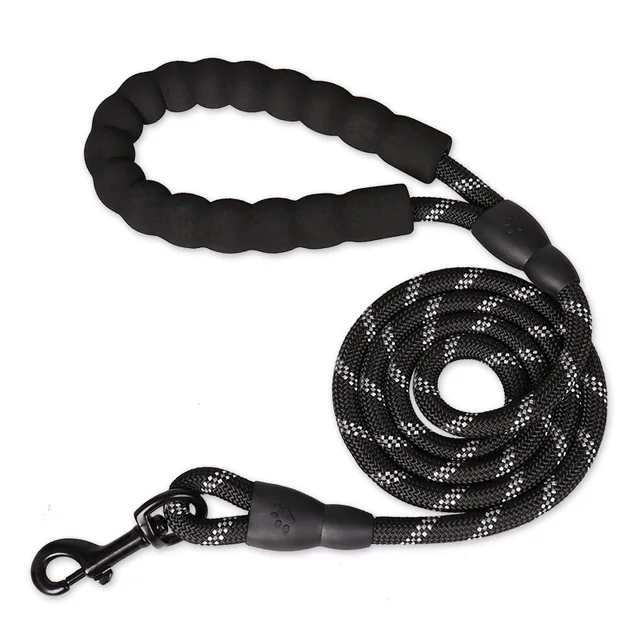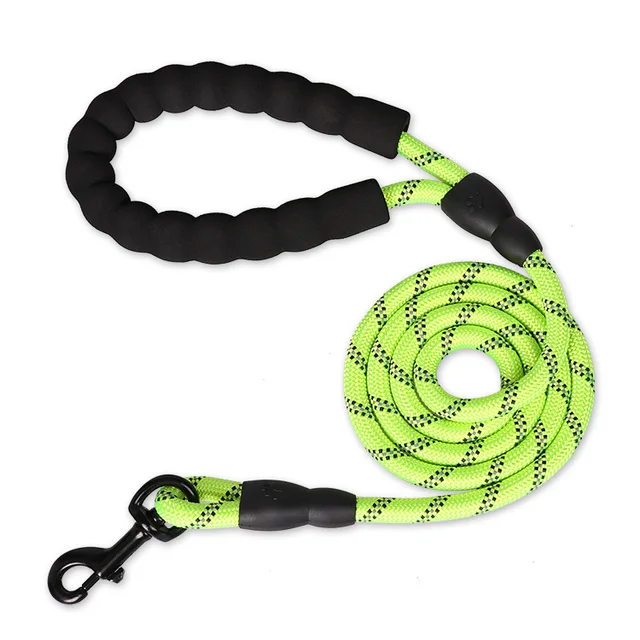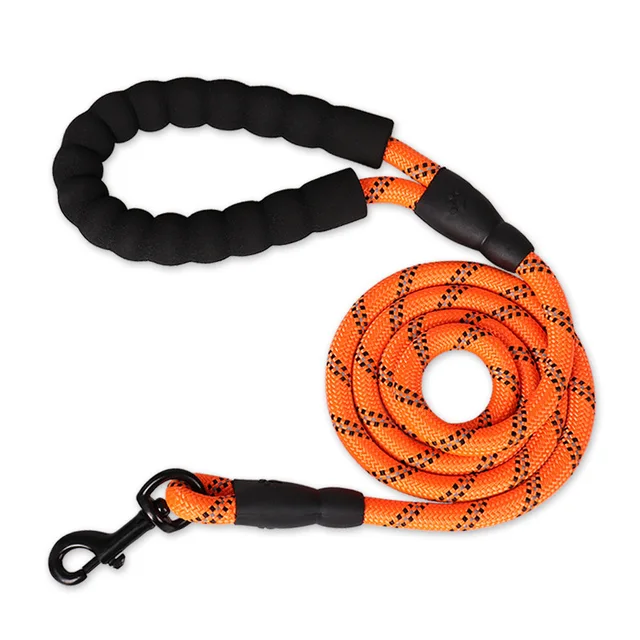Ensuring the safety of your dog is paramount, and one of the simplest and most effective ways to do this is by keeping them on a leash. This guide delves into why leashing your pet is crucial, exploring the benefits, legal considerations, and practical tips for effective leashing.
Understanding the Benefits of Leashing Your Dog
Enhanced Safety for Your Dog
Leashing your dog provides enhanced safety by keeping them under control and preventing them from wandering into dangerous situations. Dogs, driven by curiosity, can easily stray into traffic, encounter aggressive animals, or get lost. A leash acts as a physical barrier between your dog and potential hazards, allowing you to guide them safely through various environments. This control is particularly important in busy urban areas, where traffic and crowds pose significant risks.
Protection from Other Animals
Another significant benefit of leashing your dog is protection from other animals. Dogs can sometimes react unpredictably around other animals, especially if they feel threatened or provoked. A leash ensures that you can prevent any aggressive encounters or prevent your dog from approaching animals that may not be friendly. This is crucial not only for the safety of your dog but also for the safety of other animals and people.
Improved Training and Behavior Management
Leashing is also a valuable tool for training and behavior management. It allows you to reinforce good behavior and correct undesirable actions promptly. By maintaining control over your dog’s movements, you can guide them away from distractions, prevent them from pulling or lunging, and encourage them to focus on you. This consistent training helps in developing a well-behaved and obedient pet.

Legal Considerations and Community Standards
Understanding Local Leash Laws
Many regions have specific leash laws designed to ensure public safety and animal welfare. These laws typically require dogs to be on a leash when in public spaces, such as parks, sidewalks, and streets. Understanding and adhering to these regulations not only keeps your dog safe but also helps you avoid potential fines or legal issues. It’s important to check local ordinances to ensure you are in compliance with the leash laws in your area.
The Role of Leashing in Community Safety
Leashing your dog also plays a crucial role in community safety. Well-leashed dogs reduce the likelihood of accidents and conflicts with other pets or people. They help maintain a sense of order in public spaces and contribute to a more pleasant environment for everyone. By leashing your dog, you demonstrate responsibility and consideration for your community, fostering a safer and more harmonious public space.
Choosing the Right Leash for Your Dog
Types of Leashes Available
Selecting the appropriate leash for your dog is essential for effective control and comfort. Various types of leashes are available, each designed for different purposes. Standard leashes are typically made of nylon or leather and provide reliable control. Retractable leashes offer more freedom for your dog while still maintaining some control, though they should be used with caution in busy or unpredictable environments. Harnesses with leashes are beneficial for dogs prone to pulling or those with respiratory issues.
Factors to Consider When Choosing a Leash
When choosing a leash, consider factors such as your dog’s size, strength, and behavior. For larger or stronger dogs, a sturdy, heavy-duty leash is essential to ensure control and safety. Smaller dogs may benefit from lighter, more flexible leashes. Additionally, consider the comfort of the handle and the leash’s length to suit your walking style and the environments you’ll be in. A well-chosen leash enhances your ability to manage your dog effectively and comfortably.
Training Your Dog to Walk on a Leash
Basic Leash Training Techniques
Training your dog to walk on a leash is a crucial skill that requires patience and consistency. Begin by introducing your dog to the leash in a positive and calm manner, allowing them to get accustomed to the sensation. Start with short, enjoyable walks in a familiar area, rewarding your dog with treats and praise for walking beside you. Gradually increase the duration and complexity of the walks as your dog becomes more comfortable and obedient.
Addressing Common Leash-Related Issues
Common leash-related issues, such as pulling, jumping, or lagging behind, can be addressed with specific training techniques. For pulling, use a no-pull harness or head collar to gently guide your dog back into position. Consistently reward your dog for walking at your side and stopping when you stop. If your dog jumps or lunges, redirect their attention and encourage calm behavior. Addressing these issues promptly ensures a more enjoyable and controlled walking experience for both you and your dog.

Ensuring Leash Safety and Maintenance
Regular Inspection and Replacement
Maintaining the safety and effectiveness of your leash requires regular inspection and timely replacement. Check the leash for signs of wear, such as frayed edges or weakened stitching, which could compromise its strength and control. Inspect the clips and hardware for any signs of damage or malfunction. Replace any worn-out leashes to ensure continued safety and reliability during your walks.
Proper Storage and Care
Proper storage and care of your leash are also important for maintaining its condition. After each use, clean the leash if necessary to remove dirt or debris. Store it in a dry, cool place to prevent damage from moisture or extreme temperatures. By taking good care of your leash, you prolong its lifespan and ensure that it remains a reliable tool for keeping your dog safe.
Common Myths About Leashing and the Truth Behind Them
Myth: Leashes are Cruel and Restrictive
One common myth is that using a leash is cruel and restrictive for dogs. In reality, leashing is a necessary safety measure that helps keep dogs secure and out of harm’s way. Far from being cruel, a leash can provide structure and security for dogs, making them feel more comfortable and confident in unpredictable environments. It’s important to ensure that the leash is used correctly and comfortably, so it does not cause any harm or undue stress to your pet.
Myth: Leashes are Only for Training Purposes
Another misconception is that leashes are only useful for training purposes. While leashes are indeed valuable tools for training, they also serve several other critical functions. Leashes ensure safety during walks, prevent unwanted behavior, and help maintain control in potentially dangerous situations. They are an essential tool for everyday outings, regardless of your dog’s training level or behavior.
Myth: All Leashes are the Same
Not all leashes are created equal, and assuming they are can lead to problems. Different types of leashes are designed for different purposes, and choosing the wrong one can affect control and comfort. For instance, a retractable leash may offer more freedom but can be challenging to manage in high-traffic areas. A well-informed choice of leash type and material is crucial for ensuring both your and your dog’s safety and comfort.
The Role of Leashing in Socialization
Facilitating Positive Social Interactions
Leashing plays a significant role in facilitating positive social interactions for dogs. When your dog is leashed, you have better control over their movements, allowing for more manageable introductions to other dogs and people. Properly managed interactions can help your dog build confidence and learn appropriate social behaviors. Leashes enable you to guide and correct your dog’s behavior during these interactions, reducing the risk of negative encounters.
Reducing Stress in Social Settings
For many dogs, unfamiliar social settings can be stressful. A leash provides a sense of security by allowing you to control the environment and prevent sudden surprises. By using a leash, you can ensure that your dog remains calm and focused, reducing their anxiety and making social interactions more enjoyable. This controlled exposure can gradually help your dog become more comfortable and well-adjusted in various social scenarios.

Conclusion: The Importance of Leashing for a Safe and Happy Dog
Leashing your dog is a fundamental practice that contributes to their safety, behavior, and overall well-being. It provides essential control, protects them from potential dangers, and supports effective training. By understanding the benefits, choosing the right leash, and maintaining proper care, you ensure that your walks are enjoyable and secure for both you and your furry companion. Ultimately, leashing your dog is a simple yet powerful way to demonstrate your commitment to their safety and happiness.










